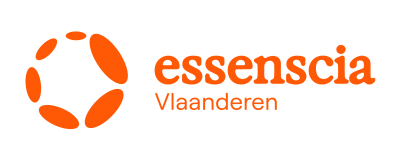Topics
We organise our actions in six thematic & strategic agendas:
Strategic Agendas:
Bio-economy
Circular Construction
Chemicals/Plastics
Manufacturing Industry
Food Chain
Water Cycles
Seven leverages provide additional support:
Leverage effects:
Lever Policy Instruments
Lever Circular Procurement
Lever Communication
Lever Innovation & Entrepreneurship
Lever Financing
Lever Jobs & Skills
Lever Research
What, why and how?
Why are we pursuing a circular economy?
Future visions 2050
How do we see our circular future?
About our management
Who steers what at Flanders Circular?
Window of (Circular) Opportunity
Circular aluminium window, door and facade systems
Within the building sector, there is a need for a wider range of circular window and façade products. That is why Reynaers, in cooperation with VITO and VUB, wants to work on adapting aluminium window and door systems to make them more reusable.
To get a feel for the interests of all partners in the chain (i.e. architect, system supplier, contractor, demolisher and scrap processor), we organised a workshop on circular procurement and the evaluation of circular connections. We then held interviews with the different parties. This helped us define the role that joinery can play in circular design. In parallel, VITO conducted a circularity scan that revealed the positive and negative points of aluminium joinery.
On this basis, we determined our various research activities: a study of the possible circular scenarios for facades and the impact of refurbishment of window and door elements, the development of a detachable building connection and the identification of challenges in the recycling process by visiting Galloo and Jansen Recycling Group.
Furthermore, together with VITO and VUB, we developed a design guide for architects that provides them with ways to make joinery circular.
Reynaers Aluminium
Partners VITO / EnergyVille, VUB, Th!nk E
Sectors
Themes
Organisations
Website
MOST IMPORTANT
RESULTS
- Using a circularity scan, we identified the various working points to make aluminium joinery more circular.
- We evaluated several options to extend the lifespan of aluminium joinery: in-situ repainting, sealant replacement and partial facade replacement.
- We worked out a concept for a detachable building connection. We tested it for air, wind and water performance and mechanical strength. We also analysed the cost, detachability and residual value of the new concept.
- Together with VITO and VUB, we translated the needs of architects and opportunities in the chain into adapted technical solutions. We cast these solutions in a complete design guide tailored to the architect.
MOST IMPORTANT
LESSONS LEARNED
- The strong circular points of aluminium joinery are its recyclability, long service life with value retention and interchangeability of components (glazing, seals and fittings). Work points include reversibility of joints and building connections.
- Existing joinery products already offer circular opportunities through partial replacement (in facade systems), refurbishment (replacing seals to restore performance) and in-situ repainting.
- The classic residential building connection with built-in windows and doors prevents reuse of window elements and needs to be rethought. We provide an initial impetus with the design of the detachable building connection. Thus, we showed that alternative high-performance building connections are possible.
WHAT DOES
THE FUTURE HOLD?
The detachable building connection will be further evaluated, whereby it will be extremely important to take the full cost into account, as this will initially mean an adjustment for our structural engineers with possible cost implications, but the overall cost for the end customer will be favourable due to the easier finishing of the building.
We are also looking at whether it makes sense to completely dismantle the joinery elements again, taking into account the treatment processes at the demolition processors.
Finally, we will be part of the advisory board of the Circular Demolition Hubs project together with VIL, VITO and WTCB.

















